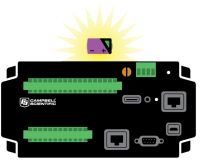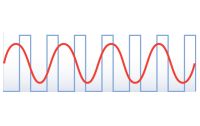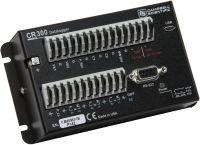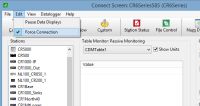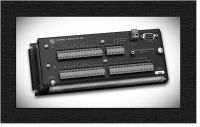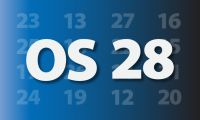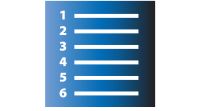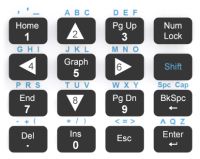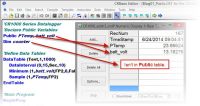Data Logger Topics Your source for data logger-related articles
Displaying 41 - 56 of 56 articles
Internet de las cosas (IoT) – lo hacemos desde el 2000
Autor: Dana Worley | Última actualización: 09/28/2016 | Comentarios: 2
We all remember the year 2000 as the year that The World As We Know It would come to an end. Computer systems were predicted to come crashing down on January 1, leaving in their wake failing infrastructure that would affect millions of lives. In... leer másCómo saber cuando se llena la memoria de su datalogger
Autor: Janet Albers | Última actualización: 09/15/2016 | Comentarios: 2
It’s common for our customers to wonder when their data logger memory is going to be full, what will happen to their data when the memory is full, and what they should do about it. After all, your data is specific to your application and... leer másSaber más sobre la pila de litio de su datalogger
Autor: Jacob Davis | Última actualización: 05/18/2016 | Comentarios: 2
When was the last time you checked the air pressure on your automobile’s spare tire? What if you were driving along, got a flat tire, and discovered that your spare tire was flat as well? We don’t often think about our spare tire until we... leer másSeleccionar correctamente la señal en frecuencia a medir
Autor: Jacob Davis | Última actualización: 04/21/2016 | Comentarios: 0
Have you ever had a sensor work on a P (pulse) data logger terminal, but not on a C (control) terminal? Is the list of choices for the PConfig parameter in the PulseCount() instruction daunting? Campbell Scientific data loggers offer several options for measuring pulse... leer másMás de 10 razones que maravillan del nuevo datalogger CR300
Autor: Robin Deissinger | Última actualización: 03/16/2016 | Comentarios: 3
En esta breve entrevista, Kevin Rhodes, product manager del nuevo datalogger CR300, nos explicará que valor añadido puede aportar a nuestros clientes de Campbell Scientific. Kevin es Director de productos en Campbell Scientific, Inc. El fue entrevistado por Robin Deissinger, editor de nuestro blog. Entrevista Q&A Control... leer másA Datalogger Connection Culprit with Benefits
Autor: Dana Worley | Última actualización: 11/18/2015 | Comentarios: 0
When you have work to do, there’s nothing more frustrating than being unable to connect to your datalogger in the field. We’ve all been there: You’re in LoggerNet’s Connect window pressing the Connect button, and you’re met with nothing but the endless flashing “connecting cable”... leer másMaking Sense of an Edlog Program File for Your Retired Data Logger
Autor: Janet Albers | Última actualización: 09/09/2015 | Comentarios: 0
Our retired data loggers are still in use, and some of them use the Edlog programming language. Do you have an Edlog data logger with a .dld compiled program file that you don’t know how to read? Does your .dld file have codes that you... leer más4 New Ways to Use Array Notation: Copying or Transposing
Autor: Janet Albers | Última actualización: 07/21/2015 | Comentarios: 0
Copying or transposing has become easier with OS 28 (CR6 OS 1). This new operating system enables you to copy portions of an array to a new location, such as when transposing rows and columns. In this example we start with A(3,2) (3 rows, 2 columns) initialized as... leer más4 Ways to Make Your Data More Secure
Autor: Jacob Davis | Última actualización: 07/15/2015 | Comentarios: 0
Your data is valuable, and sometimes that value is reduced if unauthorized users have access to it. For this reason, Campbell Scientific dataloggers have numerous methods of restricting access to your data. This article is an overview of four available methods for securing your data.... leer másTroubleshooting Best Practices for Data Acquisition Systems
Autor: Jason Ritter | Última actualización: 07/08/2015 | Comentarios: 0
Are your current troubleshooting methods not as helpful as you’d like them to be? This article discusses a number of troubleshooting best practices you can use, which may help you determine the source of the problem and resume your data collection more quickly. When I... leer más4 New Ways to Use Array Notation: Complex Scaling
Autor: Janet Albers | Última actualización: 07/01/2015 | Comentarios: 0
You can perform more complex scaling in an array without needing a For/Next loop. To take advantage of this feature, use OS 28 (CR6 OS 01) or later. In this example program, a unique set of multipliers and offsets is applied to the column of an... leer más4 New Ways to Use Array Notation: Initializing Multi-Dimensional Arrays
Autor: Janet Albers | Última actualización: 06/10/2015 | Comentarios: 0
Initializing variables within an array is more flexible than ever with OS 28 (CR6 OS 1). You can think of a single dimensioned array as numbers in a column. Two dimensions, in comparison, puts numbers in rows and columns. The third dimension is a page. For example:... leer más6 Common Communication Problems Involving Serial Connections
Autor: Jacob Davis | Última actualización: 05/29/2015 | Comentarios: 9
Your datalogger may record great data, but if you can't retrieve it, the data isn’t going to do you much good. To ensure your successful data retrieval, it’s essential that you can troubleshoot possible problems that may arise with PC-to-datalogger communication over a serial connection.... leer másHow to Find and Insert Characters Using a Keyboard Display
Autor: Janet Albers | Última actualización: 05/29/2015 | Comentarios: 0
A keyboard display, such as the external CR1000KD or on-board display of the CR850 and CR3000, is a powerful tool you can use in the field. A keyboard display enables you to interrogate and program a datalogger independent of other telecommunication links. Most keys on a... leer másGoing Public with Your Variables in CRBasic
Autor: Janet Albers | Última actualización: 05/29/2015 | Comentarios: 0
When programming your Campbell Scientific datalogger, have you ever wondered whether you should be using a Dim variable declaration or a Public one? What is the difference between them, and when is it best to use each one? Dim and Public variables are temporary holding locations... leer más4 New Ways to Use Array Notation: Simple Scaling
Autor: Janet Albers | Última actualización: 05/29/2015 | Comentarios: 0
The newest operating system released by Campbell Scientific for its data loggers is OS 28 for the CR800, CR1000, and CR3000. (The comparable operating system version for the CR6 datalogger is OS 01.) This powerful data logger OS has been enhanced so that you can... leer más

